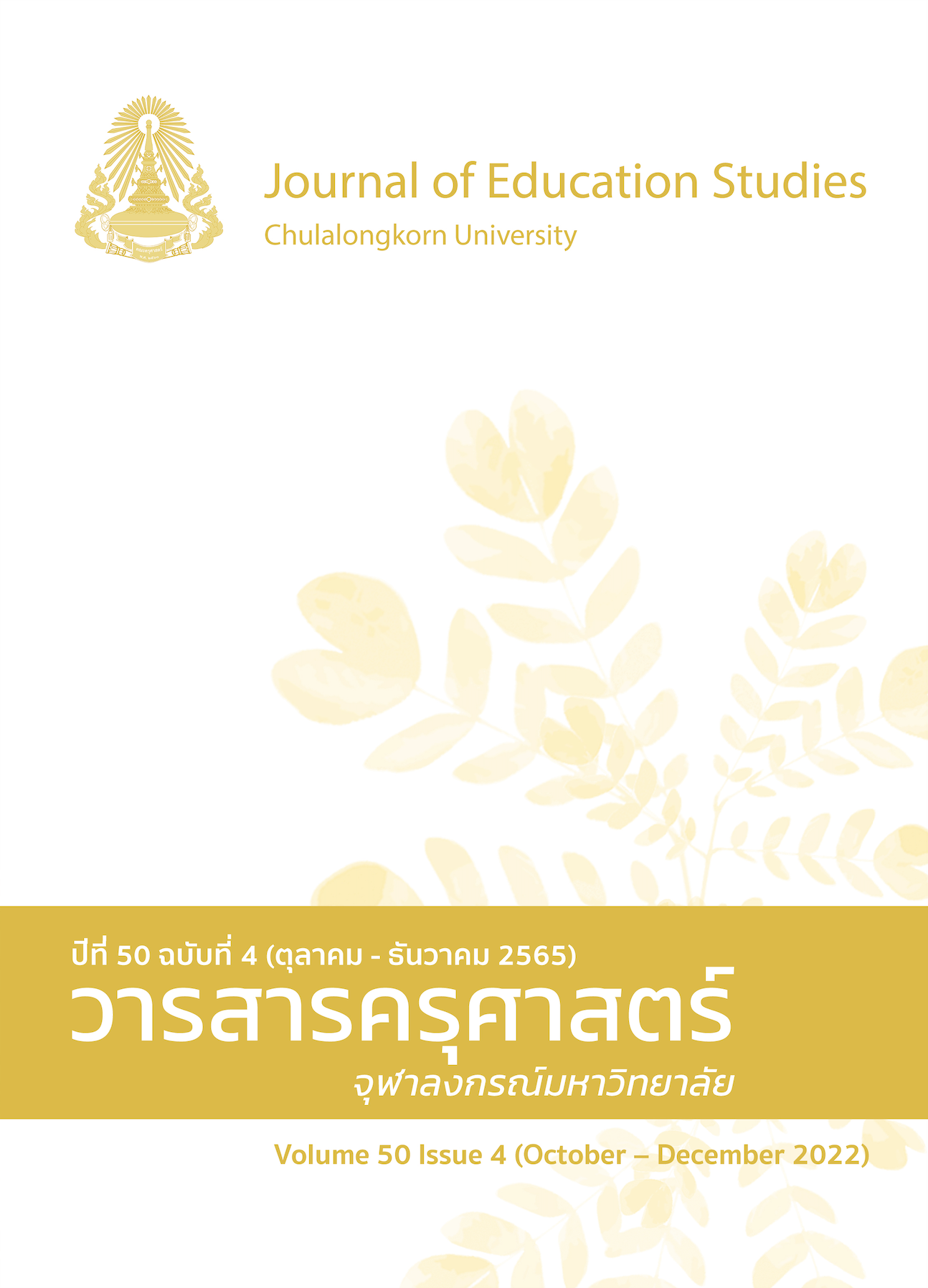The 3D Spatial Visualization Skills Training on Metaverse Technology
DOI:
https://doi.org/10.14456/educu.2022.32Keywords:
virtual training, 3d spatial visualization skills, metaverse technologyAbstract
The objectives of this research were: 1) to develop the training process for 3D Spatial Visualization Skills; 2) to develop Spatial Visualization Skills training activities on Metaverse technology; and 3) to study the results of training on 3D Spatial Visualization Skills on Metaverse technology. The sample group used in the study consisted of 15 participants in virtual digital media creation training obtained by purposive sampling. The results of the research were as follows: 1) The 3D Spatial Visualization Skills training process was sequenced according to the learner's learning level with a focus on helping and guiding learners fully at the beginning, followed by reducing the level of assistance when learners became proficient before allowing students to learn by themselves; 2) Virtual Training on Metaverse Technology activities provided learners with a clear, real, 360-degree view of key points, highlighted by the use of dotted lines, shadows, and colors to help them understand what they had learned more clearly; and 3) The results of the Skills Training found that the Spatial Visualization Skills after learning was significantly higher than before at the .05 level. The learners' ability to create three-dimensional objects through the assessment criteria was at a good level (M = 4.13, SD = 0.60), and the learning behaviors of the learners through the assessment criteria were at the highest level (M = 4.31, SD = 0.61)
References
ลัลน์ลลิต ศรีจันทร์ดร. (2565, 26 มีนาคม). การศึกษาในโลก Metaverse โอกาสใหม่แห่งการเรียนรู้ที่ไร้ขีดจำกัด. THE STANDARD. https://thestandard.co/education-in-metaverse/
Arslan, A. R., & Dazkir, S. S. (2017). Technical Drafting and Mental Visualization in Interior Architecture Education. International Journal for the Scholarship of Teaching and Learning, 11(2), 1-8. https://doi.org/10.20429/ijsotl.2017.110215
Brown, J. S., Collins, A., & Duguid, P. (1989). Situated Cognition and the Culture of Learning. Educational Researcher, 18(1), 32-42. https://doi.org/10.3102/ 0013189X018001032
Collins, A. (2006). The Cambridge handbook of the learning sciences. Cambridge, Cambridge University Press.
Dimitriu, D.G., (2016). A New Way to Help Students Improve 3-D Visualization. 2016 ASEE Annual Conference & Exposition. https://doi.org/10.18260/p.26194
Ekstrom, R. B., French, J.W., & Harman, H. H., & Dermen, D. (1976). Manual for kit of factor-referenced cognitive tests. Educational Testing Service. Princeton, New Jersey.
Eliassen, M. (2021). Spatial Ability. MSLIS, Salem Press Encyclopedia.
Howell, J. (2022, February 10). Metaverse For Education – How Will The Metaverse Change Education?. 101 Blockchains. https://101blockchains.com/metaverse-for-education/
Huang, T.C., Chen, M.Y., & Lin, C.Y. (2019). Exploring the behavioral patterns transformation of learners in different 3D modeling teaching strategies. Computers in Human Behavior, 92, 670-678. http://dx.doi.org/10.1016/j.chb.2017.08.028
Jacobus, K. P., & Anass, B. (2019). Enhancing Graphic Communication and Design Student Teachers' Spatial Visualisation Skills through 3D Solid Computer Modelling. African Journal of Research in Mathematics, Science and Technology Education, 23, 52-63. http://dx.doi.org/10.1080/18117295.2019.1587249
Liao, K. H. (2017). The abilities of understanding spatial relations, spatial orientation, and spatial visualization affect 3D product design performance: using carton box design as an example. Int J Technol Des Educ, 27, 131–147. https://doi.org/10.1007/s10798-015-9330-3
Sadhuwong, K., Koraneekij1, P., & Natakuatoong, O. (2017) effects of a blended learnin model integrating situated multimedia lessons and cognitive apprenticeship method on the clinical reasoning skills of nursing students. Journal of Health Research, 30(6), 421–431. https://doi.org/10.14456/jhr.2016.56
Safhalter, A., Glodez, S., Sorgo, A., & Virtic, M. P. (2020). Development of spatial thinkin abilities in engineering 3D modeling course aimed at lower secondary students. International Journal of Technology and Design Education, 32, 167–184. https://doi.org/10.1007/s10798-020-09597-8
Downloads
Published
How to Cite
Issue
Section
License

This work is licensed under a Creative Commons Attribution-NonCommercial-NoDerivatives 4.0 International License.




